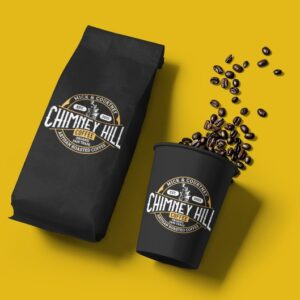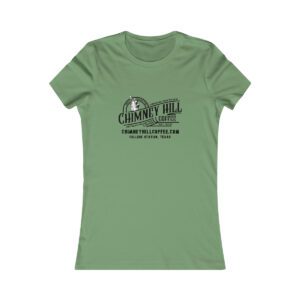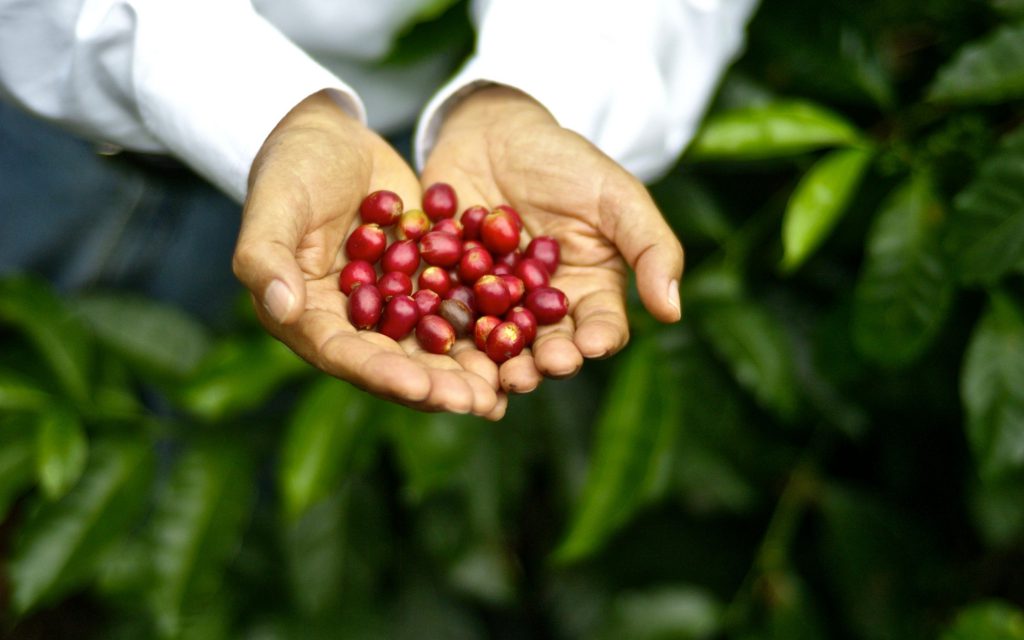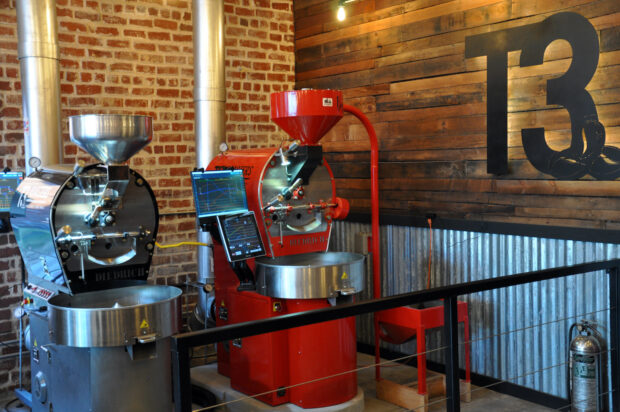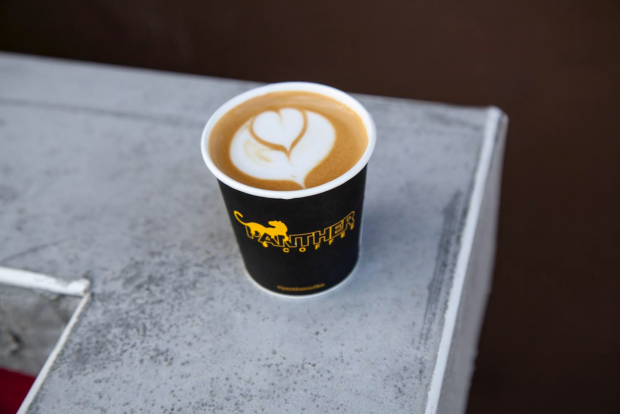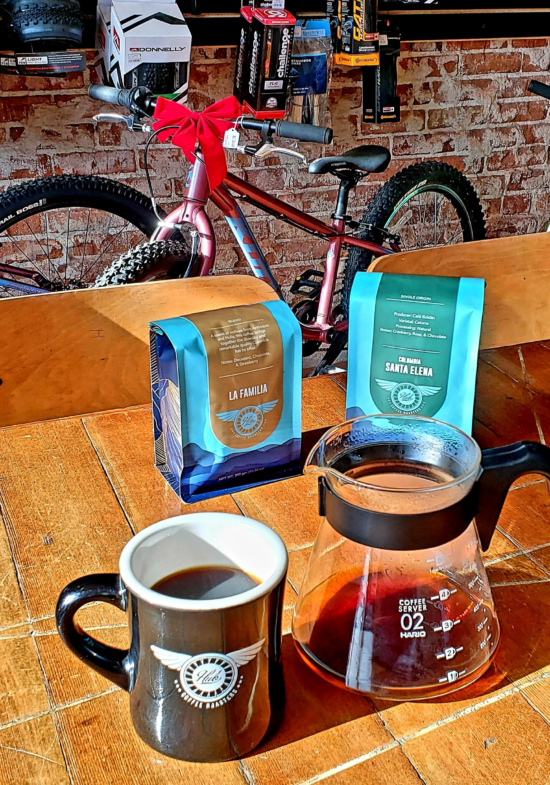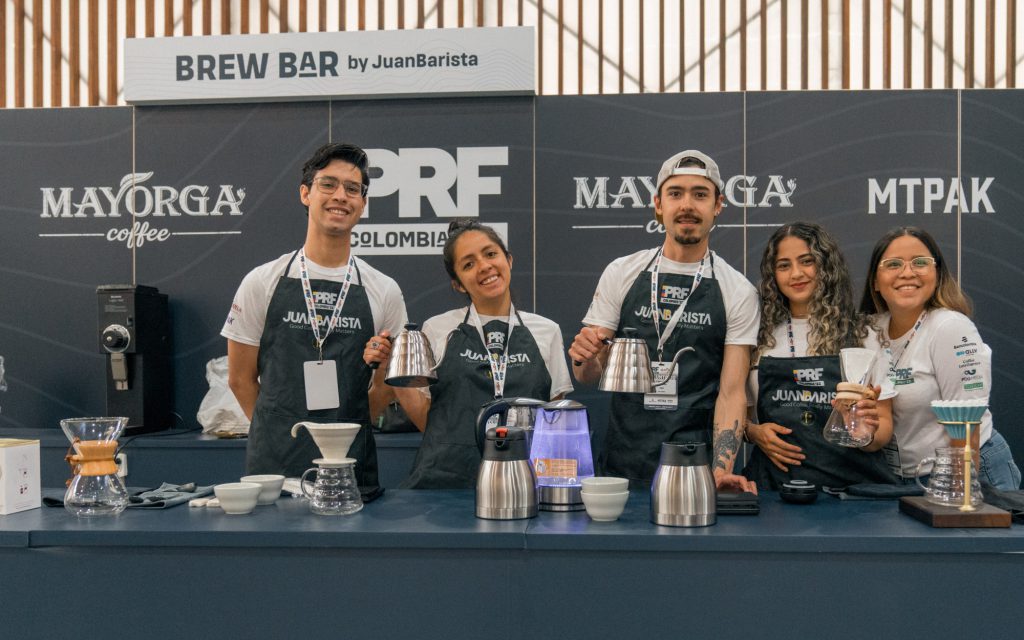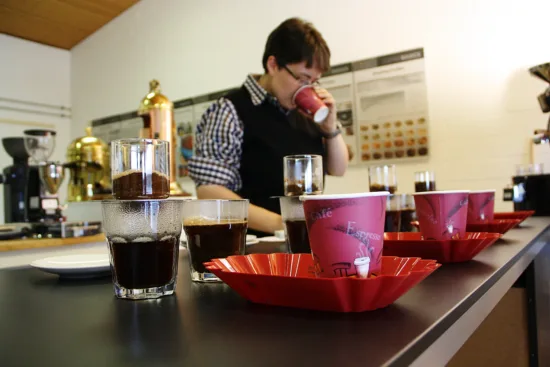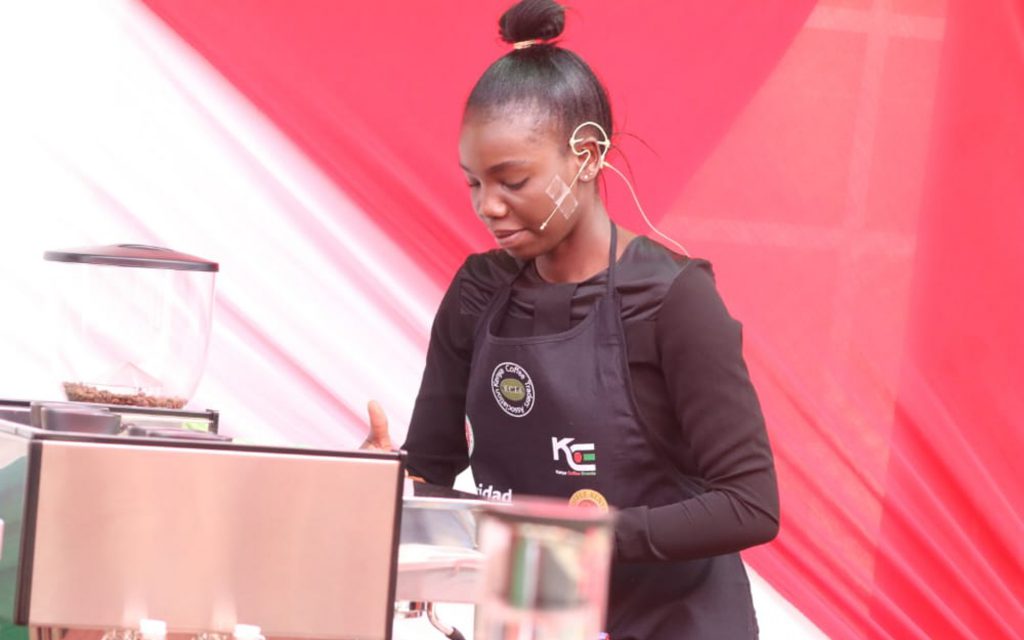I currently use an Ode for my drip and a Lido 3 for my espresso. I have ALS though and can no longer hand grind. My Ode is acting up after daily use 1-2 times a day for 3.5 years. I’ve cleaned it regularly it’s the motor I think having issues. Making odd noises....
Fresh Fruit or “Juicy Fruit”? Tasting 90 Anaerobic-Processed Coffees
Fresh Fruit or “Juicy Fruit”? Tasting 90 Anaerobic-Processed Coffees
Fresh Fruit or “Juicy Fruit”? Tasting 90 Anaerobic-Processed Coffees
Fresh Fruit or “Juicy Fruit”? Tasting 90 Anaerobic-Processed Coffees
Fresh Fruit or “Juicy Fruit”? Tasting 90 Anaerobic-Processed Coffees
Fresh Fruit or “Juicy Fruit”? Tasting 90 Anaerobic-Processed Coffees
[MOD] What have you been brewing this week?/ Coffee bean recommendations
Hey everyone! Welcome back to the weekly /r/Coffee thread where you can share what you are brewing or ask for bean recommendations. This is a place to share and talk about your favorite coffee roasters or beans. How was that new coffee you just picked up? Are you...
All arabica coffee is genetically similar: how can beans taste so different?
submitted by /u/fascinatingMundanity [link] [comments]
9 year old Baratza Encore: continue to fix or time to replace?
I’ve been fighting a slow grinding issue for a while now. It takes a long time (3-5 minutes) to grind enough coffee for a pot. The grind seems "fine" as well (the dial is set at 18). The beans seem to "bounce" up from the grinder cone a little....
Quality coffee bean grinders to invest in?
Hello everyone. I'm currently looking for a well-built coffee bean grinder to purchase. To give a little more detail, I'm looking for a grinder that can do coarse (cold brew, French press) and medium (pour over Chemex) grinds well. I currently have an...
Grinder for drip, pour over, and French press
I've been looking to buy a new grinder, I have a Eureka mignon filtro but I'm not happy with how it grinds on the courser end of the spectrum. Its just a mess of huge pieces and small fines and even on some pour overs the grind isnt very good either....
[MOD] Show off your gear! – Battle-station Central
Let's see your battle-stations or new purchases! Tell us what it is you have, post pictures if you want, let us know what you think and how you use it all to make your daily Cup of Joe. Feel free to discuss gear here as well - recommendations, reviews, etc. Feel...
When customers complain about the price of a cup of coffee, how should I respond?
I have to imagine that I'm not the only barista who has tried to give a customer a mini-lecture on the dynamics of the coffee supply chain. For those who have run into this similar question, how have you explained to people why their coffee is expensive using...
Pourover extraction temperature: If you had to accept a gradient, what direction is better?
A little coffee making puzzle I was trying to figure out. If you are making a V60 pourover with a fairly light roast (pick your recipe of choice). Saddly you cannot get water at your target temperature (say 202 F). Your water will either start warmer and get colder,...
Questions about taste, what is good acidity vs. sourness? Too much vs enough bitterness?
Hi all, so basically just got into specialty coffee, before this I'd only ever had instant and over roasted coffee from big chains, since I live in a country with no specialty coffee shops. My set up is, single origin guatamalan beans (freshly roasted a week...
Are there any good instant coffee brands at big box stores like Walmart (in the US)?
I recently went on a rabbit trail of instant coffee concoctions on YouTube, and bought some Folgers Instant Coffee to try it out. I actually quite enjoyed some of the instant coffee lattes I've been trying, but I know Folgers is generally considered pretty low...
Fruity coffee
I recently visited a coffee plantation and bought a bag there. They sold their bags there with labels on how the bean was processed. This “Natural” processed coffee is incredible. It’s fruity. It doesn’t have that like signature “burnt” flavor coffee has. It almost...
When recipes call for water temperature, do they mean the temp inside the kettle right before you pour it, or the temp while it brews?
I don't get it. I often see posts/recipes saying that light roasts need to be in the brewed in the 200F zone, but as soon as my cup is filled with water, the temperature has dropped to the low 190s range (in my case, I'm using an aeropress) So yeah, it drops...
[MOD] Inside Scoop – Ask the coffee industry
This is a thread for the enthusiasts of /r/Coffee to connect with the industry insiders who post in this sub! Do you want to know what it's like to work in the industry? How different companies source beans? About any other aspects of running or working for a...
Different espresso recipe?
I work at a cafe where they are using a dark roast blend and they are pulling 32g from a 18g dose for espresso. Strangely however, they pull it in 6 seconds instead of the usual 20s-30s. I’m not sure why they don’t use the standard recipe and am too afraid to ask...
Fellow Ode SSP astringent and lacking clarity on filter compared to even espresso-focused grinders
I recently acquired a Timemore Sculptor 078s, which is intended to be used primarily for espresso and supposedly doesn’t make the cleanest drip coffee according to reviewers. So out of curiosity I’ve been comparing it a lot over the past couple weeks to my gen 1 Ode...
There Are Two More Qualifying Events This Weekend
This article is from the coffee website Sprudge at http://sprudge.com. This is the RSS feed version. The 2024 United States Coffee In Good Spirits, Brewers Cup, and Latte Art Championship Qualifying Events take place in Bethesda, Maryland and Washington, DC.
Competition, Cold, and More from the 2024 U.S. Coffee Competition Qualifiers in Houston
The first round of qualifiers for the 2024 season of the United States Coffee Competitions featured the U.S. Barista, Cup Tasters, and Roasters qualifying competitions. BY KATE VAN PETTENSPECIAL TO BARISTA MAGAZINE Photos courtesy of U.S. CoffeeChamps The first round...
Aging of coffee (specifically decaf) in freezer
Hey, My girlfriend mostly drink decaf and she has a favorite coffee that she gets from a reputable roaster. Problem is, she really likes it when she gets one at the cafe, but she doesnt when we brew it at home. Even I struggle to get a correct grind size (DF64 V1) and...
Target / Good & Gather Coffee & other "unexpectedly delicious" store brand coffees?
Has anyone tried Target's in-house brand of specialty coffee? I recently decided it was too much money to continue buying super specialty beans from roasters - I know, I feel guilty not supporting smaller local roasters and will still do it every so oftenwhen I...
Examples of refractometer use in a café’s workflow?
Hello all. Curious if any baristas/qc folks here can provide examples of how they’ve used refractometers in their cafés? I understand their limitations, and I am comfortable using refractometry to gain reference points when testing recipes. But I’d really appreciate...
Drip Coffee – Does the machine matter?
Hello, Everyone! I am in a bit of a predicament and would like some guidance. For context - I am still an amateur coffee guy. I have begun to dabble in the coffee world and am slowly building my knowledge. A few years back, I began to explore quality coffee and get...
UK coffee bean recommendations
Hi. Can anyone recommend some companies that do speciality beans. I’ve tried a fair few but I like to rotate and try something new. Here’s a few I’ve tried, some do really good coffee, some I thought were just ok: - Hasbean - Horsham - Perky Blenders - North Star -...
Visiting Amsterdam. Any coffee suggestions?
I'm in Amsterdam this week. Are there any coffee's I should check out while I'm here? I'm from the US so ideally something not available back home. submitted by /u/OlDirtyBrewer [link] [comments]
Fresh Fruit or “Juicy Fruit”? Tasting 90 Anaerobic-Processed Coffees
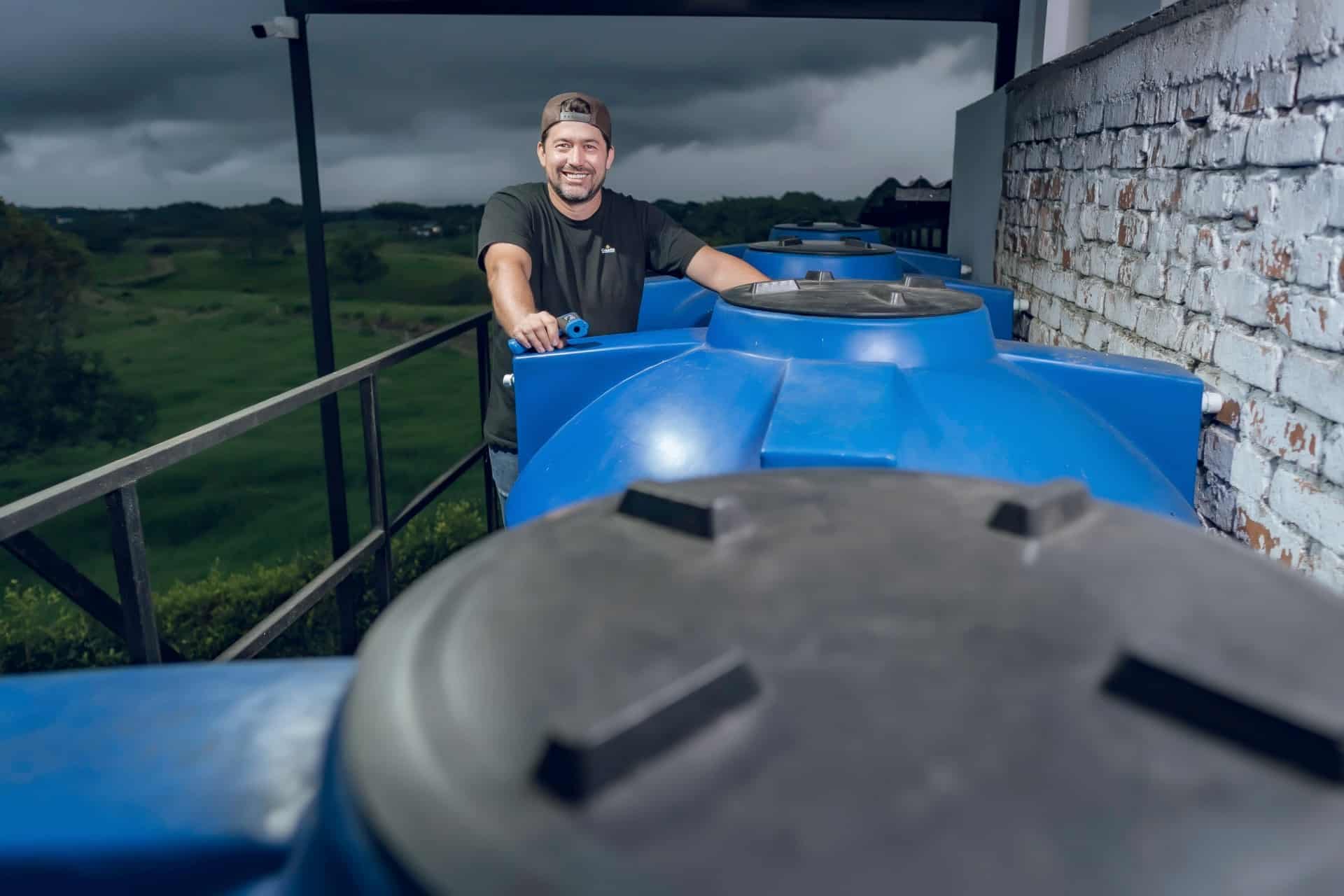
Edwin Noreña checks on his Double Carbonic Galaxy Hops Geisha at Finca Campo Hermoso in Colombia. Courtesy of Barrington Coffee Roasting Co.
Of all of the innovations challenging traditional expectations in specialty coffee today, the use of anaerobic (limited oxygen) fermentation to alter and intensify the character of the cup is perhaps the most striking. Anaerobic-fermented coffees that explicitly and successfully express this method tend to be intense and almost shockingly floral and fruit-toned, with the flowers often boosted by a candyish sweetness and surprising spice and herb notes.
Many in the specialty coffee world love them for their sheer difference from ordinary coffees, for the audacity of their soaring flowers and seduction of their sweetness. A few find their profiles too over-the-top, their floral notes perhaps less like fresh bouquets and more like eau-de-cologne, their fruit more Juicy Fruit gum than fresh fruit. Many in the coffee world look at anaerobic-fermented coffees as the latest step forward in freeing specialty coffee from the predictability of its commodity past and thrusting it into a future of exciting new coffee experiences unlike any that have come before. Others look at these new, processing-driven coffee styles as another step in the erosion of the reliable practices that have created and maintain the great coffee types they love, the classic Kenyas and washed Ethiopias, subtle washed Perus and earthy wet-hulled Sumatras.
The best way for readers to take a position on all of that is to try a couple of the coffees we review this month. We cupped through 90 coffees described by their roasters as having been subject to anaerobic fermentation (for a little more on what that means technically, see the section Complex Events at the Mill farther along in this report). These 90 anaerobic samples averaged a score of 89, with a high of 95 and a low of 79. In choosing 10 coffees to review, we focused on samples that most clearly and pleasingly expressed the full-on floral, fruit and spice genius of the style.
Sketching the Anaerobic Style
What is that style? Most universally, all genuinely anaerobically processed coffees share the same pervasive aromatic tendency. If you’ve opened one bag you’ll know it. If you open two bags, you’ll probably never forget it. This aromatic complex is apparently created during the limited-oxygen fermentation undergone by all anaerobic coffees. It is a scent related to the aromas of certain other mainly bacterially fermented foods and beverages, like yogurt, kefir, sauerkraut, kimchi and kombucha. In terms of basic tastes, it is a version of sour-sweetness. At Coffee Review, we have settled on tangy-sweet rather than sour-sweet as an appropriate generic descriptor for this sensation as it displays in coffee.
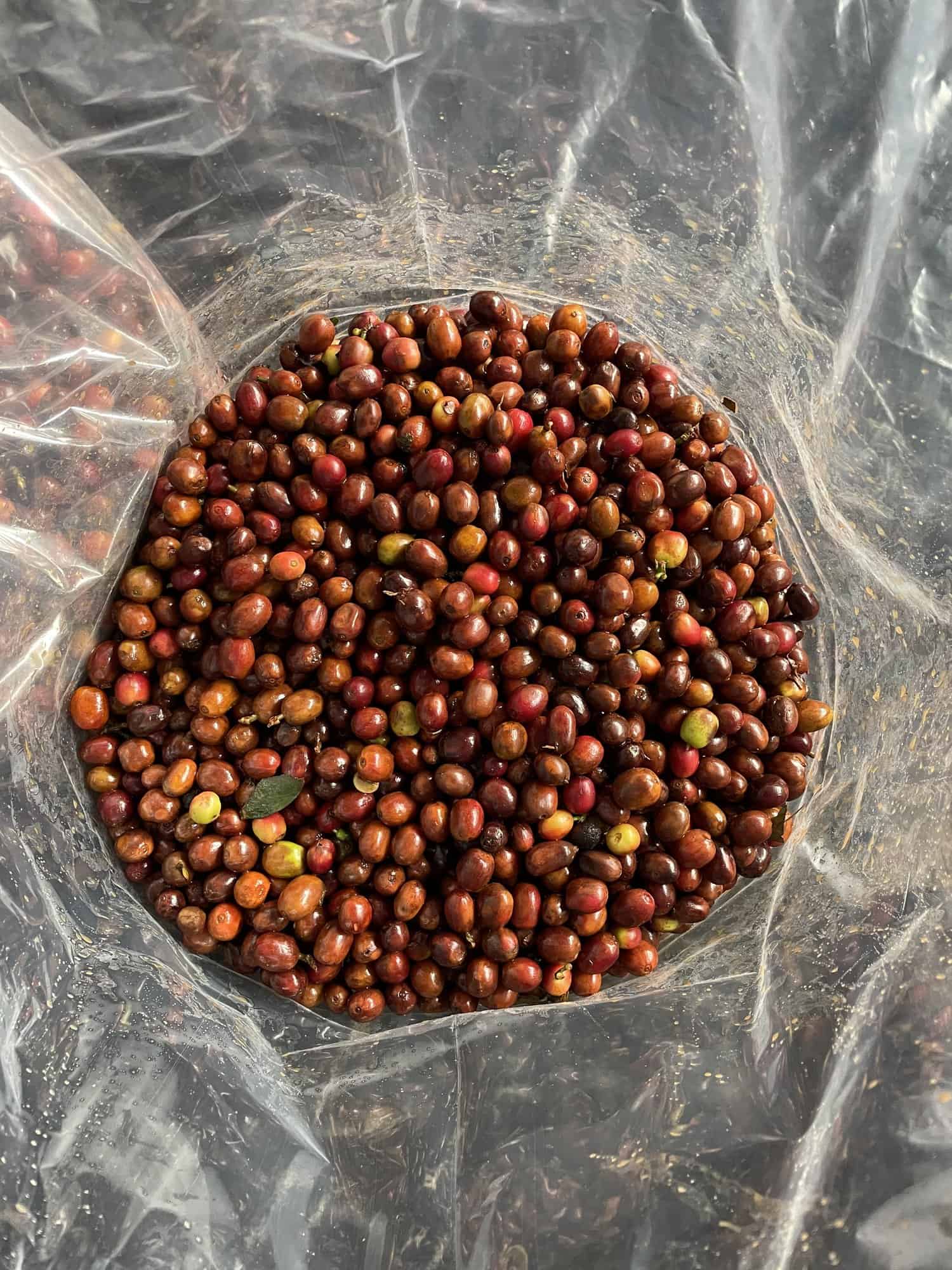
Anaerobically fermented whole coffee cherries at Colombia’s Finca El Placer. Courtesy of Chromatic Coffee.
One striking feature of this aromatic tendency is that you experience it immediately, as soon as you open a bag of anaerobically fermented coffee. Yet, once you brew that coffee, it is much less dominating. In the cup, tendencies we noted earlier come into play. If it is a successful anaerobic, free of faults such as vinegar-like over-fermentation or mulchy vegetable notes, you will likely experience intense sweetness. This sweetness will usually be complicated by a tangy, lactic version of acidity and sometimes balanced by a savory depth related to spice and nut. What you will most likely also experience is a sometimes coherent, sometimes jumbled assortment of intense and often idiosyncratic flavor notes. For example, it is not at all unusual to have candyish notes like bubblegum waft up next to baking spice suggestions like cardamom. Floral notes are sometimes so screamingly intense that they seem to express the very abstract nature of flowers.
Coffee Review and Anaerobics
We had many discussions at Coffee Review about how we should approach reporting on this increasingly popular coffee style. We wanted to respect its originality, yet avoid celebrating it purely because of that originality. We wanted to find an appropriate structure for evaluating the success of specific examples of the anaerobic style, as we did some years ago for natural-processed coffees when they first surged in popularity.
Ultimately, I took responsibility for the final ratings, working with descriptions and draft ratings from my two Q-grader colleagues, Jason Sarley and Kim Westerman. My approach was to value versions of the style that are balanced and relatively coherent, versions in which the floral and fruit notes are contexted into something generally recognizable as coffee, and in which sweetness comes across as natural rather than candyish or cloying. In other words, coffees that are exciting and different, but still taste like coffee and not like a conglomerate of cologne and sugar.
The Roaster Context: Pursuit of Balance
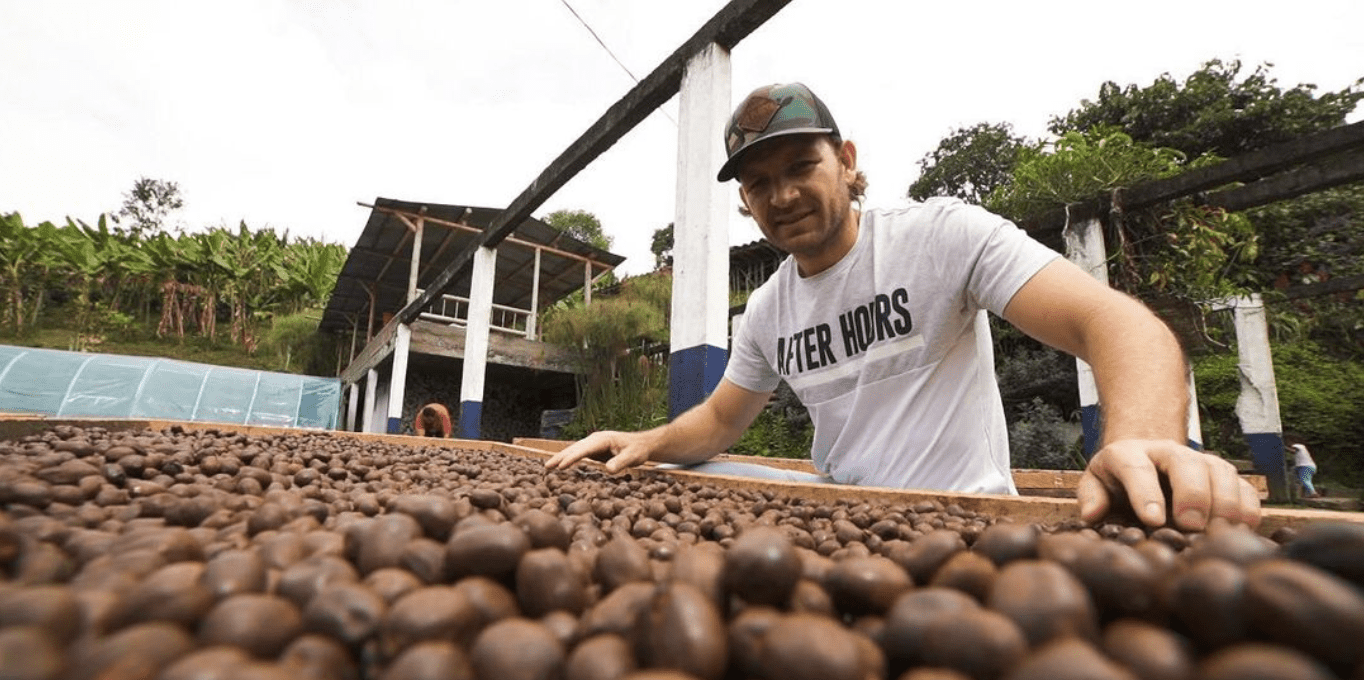
Sebastian Ramirez, of Finca El Placer in Colombia, checking on drying anaerobic fruit. Courtesy of Chromatic Coffee.
Judging from my correspondence with the 10 roasters whose coffees are reviewed here, I have plenty of support in valuing balance in anaerobics, balance usually meaning that the impact of the processing method enhances or intensifies, but does not completely dominate the coffee.
“I am most drawn to gently applied anaerobic methods that achieve surprising and elusive profiles.” Barth Anderson, Barrington Coffee Roasting Company (Galaxy Gesha Quindio Colombia, 95).
“Good anaerobics enhance and intensify the cup with clean sweet flavors … Bad or less good anaerobics seem overly processed or fake or imitation.” Mike Perry, Klatch Coffee (Colombia Monteblanco Rodrigo Sanchez Carbonic Maceration, 94).
“Definitely just because a coffee is anaerobic does not mean that it’s good. I personally love clean, fruity anaerobic-processed coffees, [but] I don’t like it when coffees take on more ferment flavors than coffee flavors.” Oliver Stormshak, Olympia Coffee (Ethiopia Gatta Anaerobic, 94).
The Origin Perspective
This innovative processing method was applied to coffee from some of the most prestigious of tree varieties — Geisha, Pink Bourbon — as well as more common, less distinctive-tasting varieties. Eight of the 10 coffees reviewed online were produced in southern and central Colombia; one was grown in Ethiopia and one in Hawaii. Although anaerobics are popping up everywhere, the method is probably currently most popular in Colombia, Ethiopia and Panama, where it appears to have originated. The preponderance of southern Colombia in this month’s reviews is partly related to season: The months following the beginning of the year are when the new crop from southern Colombia arrives in the Northern Hemisphere. However, it also appears that some Colombian producers are pursuing the anaerobic method with particular rigor and attention to detail. See the summaries of processing methods in the Notes paragraphs of the reviews for just a hint of the complexity of the anaerobic practices pursued by the producers of some of this month’s top-rated coffees.
The Consumer Angle
What do coffee consumers think about these unconventional, often flamboyant coffees?
All of the roasters whose coffees we reviewed this month agreed that anaerobics are popular with their consumers — in some cases, very popular. Gary Liao of Taiwan roaster GK Coffee (Colombia Finca El Paraiso Rose Tea, 94) points out that anaerobics make it easier for customers to identify flavor profiles because aromatic notes are more intense and idiosyncratic. “Most customers find it hard to get ‘floral’ or ‘citrus,’” he writes, “but with anaerobics they find flavors like ‘wine,’ ‘cinnamon’ or ‘pineapple.’ They tend to buy coffees in which they can notice the flavors.”
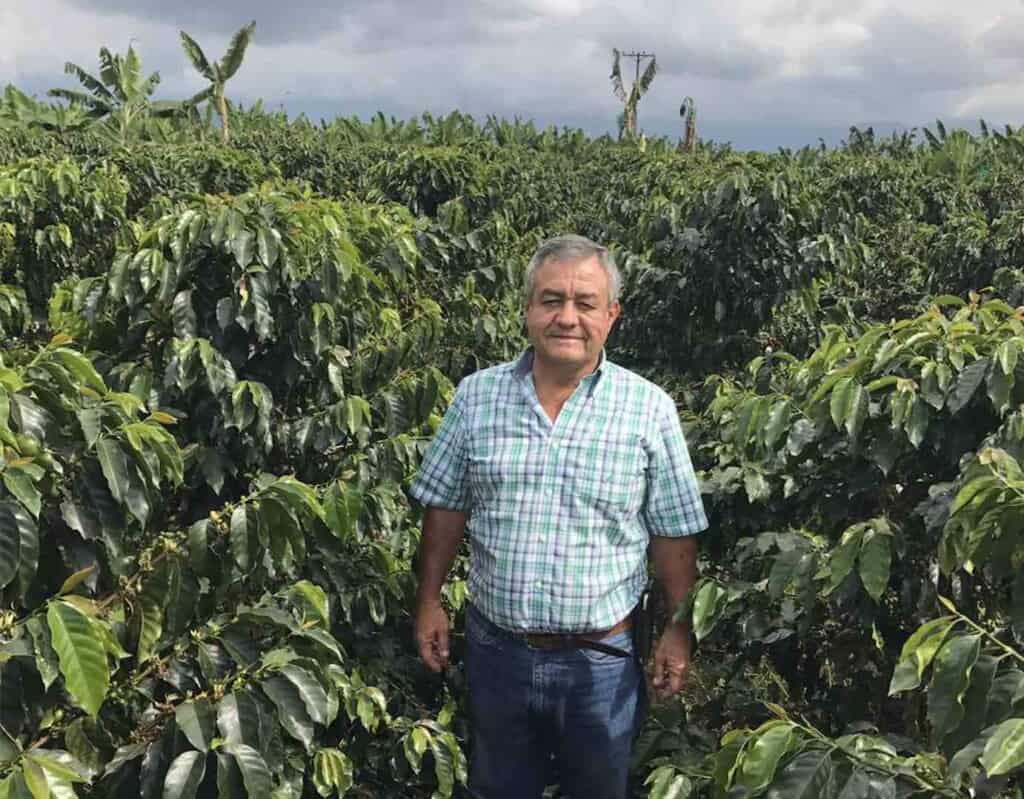
Jairo Arcila of Finca Santa Monica in Colombia. Courtesy of Royal Flamingo Coffee.
Roasters also praised anaerobics for their capacity to surprise customers and shock them into realizing that not all coffees taste the same. “Anaerobic coffees are definitely a conversation starter,” notes Bryan Brzozowski, roaster and co-founder of Royal Flamingo Coffee (Colombia Jairo Arcila Peach Maceration, 93). Adam Paronto, owner/founder of Reprise Coffee Roasters (Colombia Cauca Granja Paraiso Pink Bourbon, 94), adds: “We’ve found this process to be a major catalyst for coffee education. Most of our customer base is unfamiliar with coffee processing and a vast majority is unaware that … coffee is a fermented beverage. When they see a word like ‘anaerobic’ on our menu, it paves the way for a great conversation, opening the door to understanding other coffee processing methods.”
Nevertheless, some roasters hinted at consumer ambivalence. “Anaerobic coffees can be polarizing. Some customers love them, while some prefer more traditional coffees,” PERC Coffee Roasters‘ Director of Operations Taylor Kimball (Colombia Gesha Spirits Semi-Washed Anaerobic, 93) observes. Mike Perry and Heather Perry of Klatch Coffee add: “The great thing about coffees with this type of profile is everyone who tastes it can say, ‘Wow, that is different.’ And while some may love the difference, drinking a whole pot of it may be a little intense.”
The way anaerobic practices encourage and reward the creativity of the producer is also a virtue particularly valued by roasters. Hiver van Geenhoven, founder and director of coffee at Chromatic Coffee (Colombia Purple Fruit Anaerobic, 93) points out: “Customers may be interested in origin stories, but they also love dessert and signature beverages that play with ingredients. Now, [with anaerobics] instead of just crafting fun and creative signature beverages in our cafés, that stage can be shared with a producer who has a direct hand in the manipulation of flavor.”
Complex Events at the Mill
There are many variations on how anaerobic fermentation is performed, but all involve fermenting coffee in a sealed environment with no to very limited access to oxygen. Contact with oxygen encourages yeast fermentation and the production of alcohol. On the other hand, shutting the coffee inside sealed vessels (usually plastic or metal or tanks) encourages oxygen-free bacterial fermentation of the general kind that contributes to the production of sweet-tangy fermented foods and beverages like yogurt, kimchi, sour beers and kombucha. What happens during anaerobic fermentations is quite complex chemically, however, and a variety of yeasts and lactic-acid bacteria play a role, presumably accounting for the fusion of great sweetness and yogurt-like tang characteristic of these coffees.
In some cases, the act of limiting a coffee’s access to atmosphere and oxygen during fermentation is as simple as sealing the fermenting coffee inside bags for a relatively short time. But more often it involves complex, lengthy procedures involving closed tanks and control of pressure and temperature. If CO2 is injected into the tanks to accelerate the purging of air and oxygen, the process and coffee may be called “carbonic maceration,” a term brought over, along with many of the specific practices involved, from the wine world.
Coffee may be anaerobically fermented and dried as whole fruit (making it an “anaerobic natural”) or fermented in the fruit, then skinned and dried in the fruit flesh only (“anaerobic honey”) or fermented and dried after both skin and fruit flesh have been removed (“anaerobic washed”). Or, there may be two fermentations, one involving the whole fruit, and a second of the same beans with skins removed. Temperature and pressure inside the tanks are usually carefully monitored.
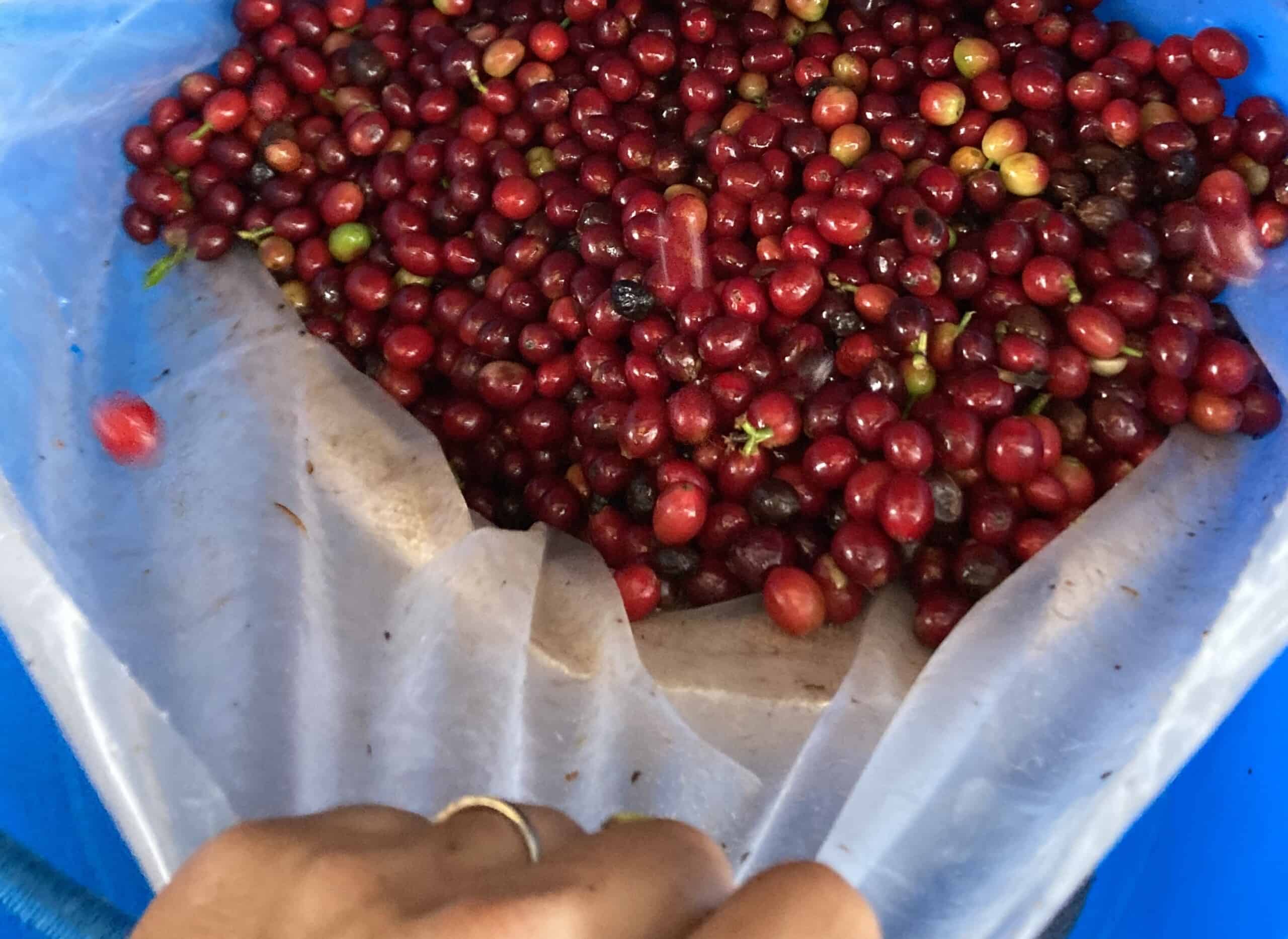
Miguel Meza of Paradise Roasters processes a JN Farms Bourbon himself, using a malolactic honey anaerobic fermentation method. Courtesy of Miguel Meza.
Pressure may be one key to the originality of the anaerobic cup profile. Pressure caused by buildup of CO2 inside the sealed fermentation tanks could help produce the sometimes astonishing display of fruit and floral notes in the final anaerobic cup by encouraging migration of fruit and floral compounds into the bean.
Many producers further complicate both the process and the final cup by adding material to the fermentation tanks, particularly cultured yeasts of the kind used in beer and wine production. With the report-topping 95-rated Barrington Galaxy Gesha Quindio Colombia, a batch of famously aromatic Galaxy hops was applied to the coffee at one point in the complex series of processing procedures. More controversially, natural fruit or spices may be shut into the tanks with the fermenting coffee. In the 93-rated Royal Flamingo Colombia Jairo Arcila Peach Maceration, natural peach pulp was added to the tank during fermentation, and pieces of peach were scattered among the drying beans.
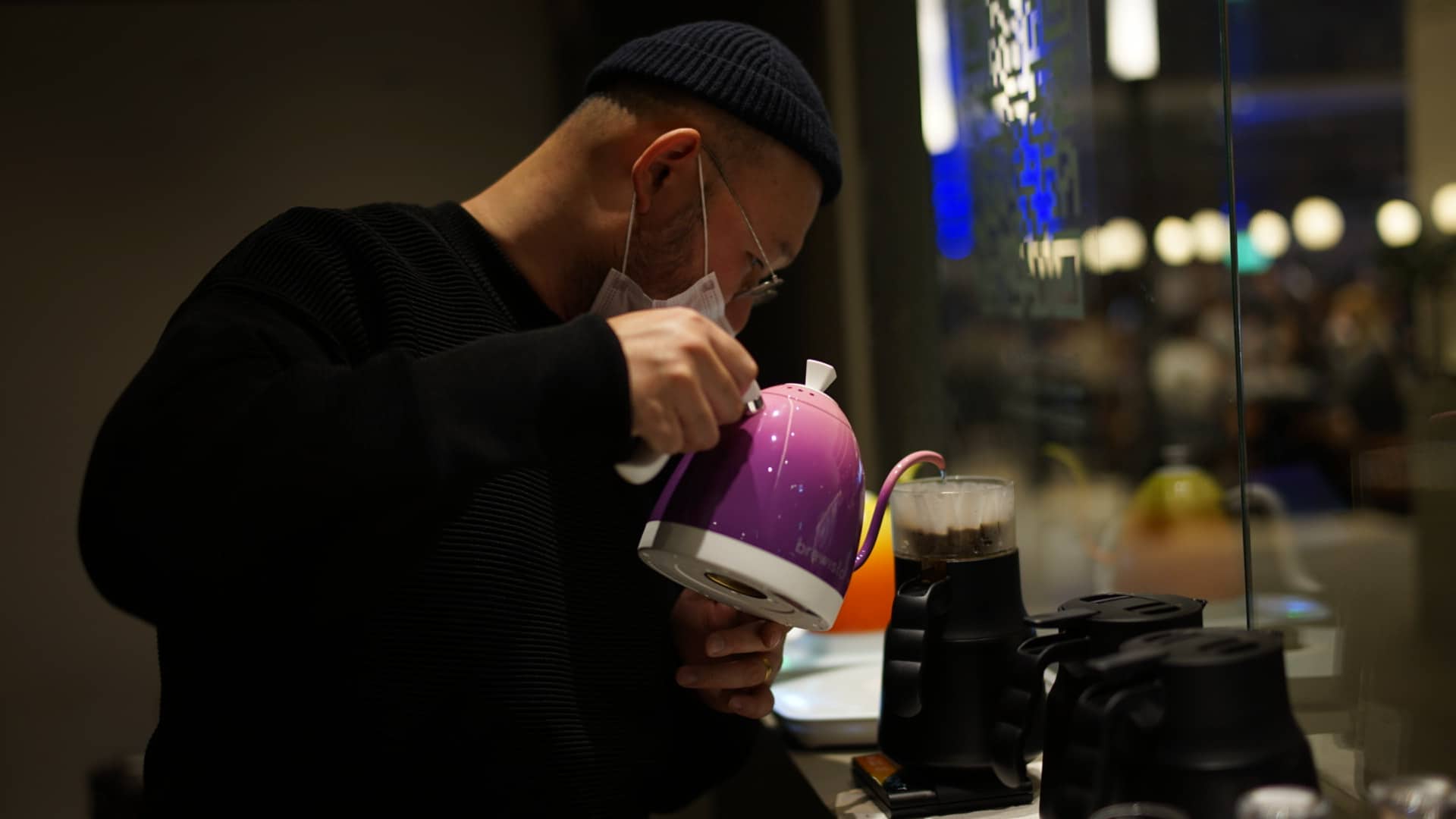
Youngjun Cho, of Prism Coffee Works, brews coffee at his shop in Seoul.
“Flavored Coffee?”
In our report coming in November of this year, we plan to look specifically into the anaerobics segment of specialty production that adds natural fruit or spices to the fermentation tank. Youngjun Cho of Prism Coffee Works in Korea (Colombia Osmanthus Bouquet Granja Paraiso 92 Colombia, 94), reports that anaerobic-fermented coffees generally are being criticized in Korean specialty coffee circles on the basis that they are “flavored coffee.” Cho argues that anaerobic coffees like his and most of the other coffees reviewed in this report are legitimate, non-flavored specialty coffees because they achieve their distinction through using only “environmental controls such as yeast, bacteria and temperature.” But he feels that those that add fruit or spices to the tank make up a different, more controversial category he calls “infused” coffee. Tune in to our November 2023 report “Fruit- and Spice-Fermented Coffees: The Cup and the Controversy,” for more on this contentious issue.
Anaerobics and Terroir
Anaerobic processing appears to be here to stay. And, in many respects, it is unprecedented in its potential impact on the specialty coffee world. Natural or whole-fruit processing may have seemed like a revolution when it was first applied to high-end coffees that until then had been processed only through traditional washed methods. But natural-processed coffees have a history as long as coffee itself, far longer than washed coffees. Honey processing is also a rather straightforward development, well within technologies and understandings already established in coffee practice.
But the technological and chemical mediations involved in anaerobics, even at the modest scale they are deployed now, seem a more radical departure from any of these earlier practices. Anaerobic methods bring to coffee technical interventions that originate in wine and in some cases beer, and invite the producer to create often radical profiles based on personal innovation rather than community expression of coffee tradition as conveyed in the term terroir.
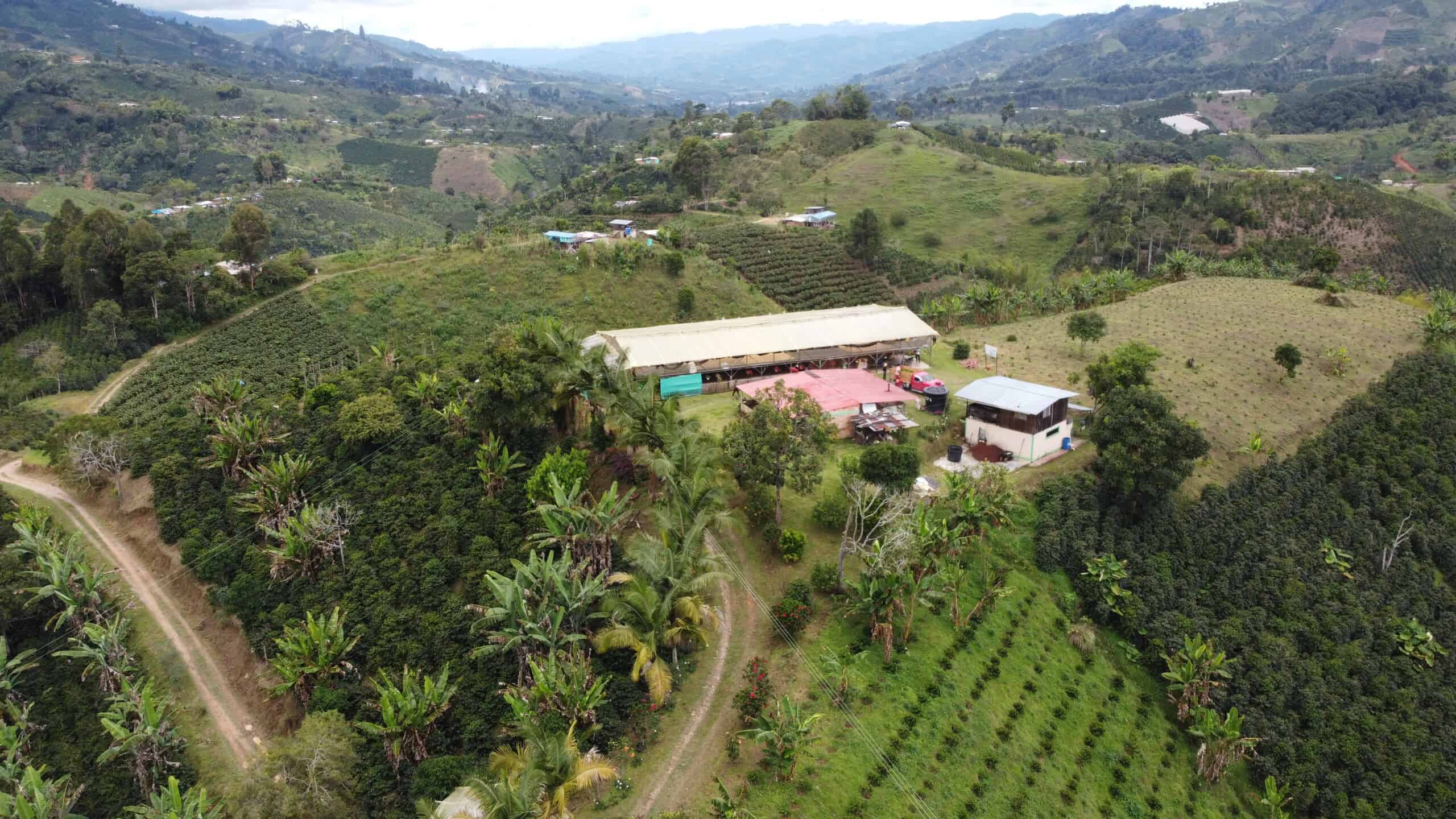
Aerial view of Finca Monteblanco in Colombia’s Huila Department. Courtesy of Klatch Coffee.
Terroir in wine and many other products is most accurately understood not simply as geography, but also as associated plant varieties and preparation methods as defined by tradition and often regulation. Great legacy types in coffee are products of a linked series of collaborative practices performed by the supply chain and determined by market expectations and tradition. Kenya coffee, a well-defined legacy type, is not only grown in a relatively limited geography, but it’s also produced from trees of certain tree varieties and processed using similar technologies and methods. Apply radical anaerobic processing to a coffee from the traditional growing regions of central Kenya, even one produced from traditional Kenya varieties like SL28 or SL34, and it will no longer express the Kenya “terroir.” It will simply be an anaerobic coffee from Kenya.
Miguel Meza of Paradise Roasters (Ka‘ū JN Farms Malolactic Honey, 95), a relentless innovator in respect to processing methods, suggests that anaerobic processing is best applied to coffees that are themselves not particularly distinctive. He says: “Generally we find mouthfeel and aroma to be intensified in anaerobic fermentations, and very beneficial to the quality of lower altitude coffees, as well as helpful in adding complexity to less distinctive varieties. But with anaerobic natural processing, the flavors of the process can be very dominant and the differentiation between varieties muted, so I don’t favor this method for expensive, limited production of rarer varieties that may have their distinctive qualities largely masked by the processing.”
Headed in the Opposite Direction from Wine?
Curiously, just at an historic moment when some in the wine world are reacting against “manipulated” wines by returning to simpler, less chemically or technologically mediated processes under the organic or low-intervention banners, we in coffee appear to be headed in the opposite direction with the latest anaerobics.
It may be that the coffee world will manage to assimilate and understand anaerobic methods as it apparently has with natural processing methods. I recall that even as few as five years ago we ran into many natural-processed coffees that were either over-fermented, giving them a slightly rotten edge, or, at the other extreme, dried too quickly and consequently too woody or nutty, bordering on lifeless.
At least at Coffee Review, we run into very few such failed naturals today. We more often sample naturals that are fruit-forward but clean, poised and complete. Perhaps innovators in aerobic processing will find their way to an analogous refinement that will offer the coffee world the “balanced” anaerobic profiles that many of this month’s correspondents say they are looking for. What will be the character of that balance?
I expect we’ll know it when we taste it.
Thanks to the roasters who greatly enriched this report by sharing their ideas and experience regarding anaerobic coffees: Beth Brzozowski, Bryan Brzozowski, Youngjun Cho, Gary and Kai Liao, Taylor Kimball, Miguel Meza, Adam Paronto, Heather Perry, Mike Perry, Oliver Stormshak, and Hiver van Geenhoven.
The post Fresh Fruit or “Juicy Fruit”? Tasting 90 Anaerobic-Processed Coffees appeared first on Coffee Review.

